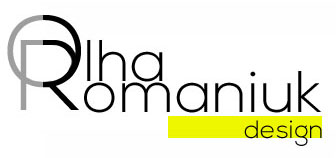Setting the stage for multiple forms of consumption, Blacksheep’s design for The Cooking Library in Seoul puts the focus squarely on sensory experiences, emphasised by tactile and analogue design elements.
From the moment you enter the multi-level, multi-faceted space intriguingly dubbed as The Cooking Library, it becomes immediately evident that this culinary-centric place is unlike any other in Seoul.
The Cooking Library is one of four ‘Libraries’ conceived by Hyundai Card – a credit card company under the Hyundai Motor Group. The idea was to create venues that provide an analogue respite from our fast-paced digital lives and to allow for meaningful connections through immersive and emotional experiences. The other three ‘Libraries’ focus on travel, music and design.
Focused on the art of cooking, The Cooking Library (located in Yeongdeungpo-gu, one of Seoul’s most affluent neighbourhoods) was designed by London-based specialist F&B design studio Blacksheep in collaboration with Choi Wook of One O One Architects. It extends beyond the boundaries of its cuisine-based programme with a series of spaces that connect fluidly through craftsmanship, tactility and analogue elements.
The Cooking Library extends across several levels, but Blacksheep’s CEO and founder Tim Mutton notes that the interiors have been intentionally designed without definitive floor distinctions. “Rather than being defined by the five levels, each space is distinguished by the experiences offered within and is linked to the next space through stimulation of the senses – by scent, sound and sight,” he says.
The Cooking Library’s universe of food unfolds sequentially through distinct yet connected settings, with materials, furnishings and fixtures offering clues to the change of function throughout the spatial journey. Inspired by a vision of a humble rural European factory transposed into the heart of Seoul, the interior spaces are defined by practicality and function with a warm and natural aesthetic softening the industrial palette.
Communal bakery and dining spaces on the ground floor are characterised by stone and concrete surfaces complemented by joinery and storage units in oak finishes. The tactile, visually rich journey continues on the next level, where a presentation of condiments becomes a spectacle of crafted luxury with delicately crafted brass, timber and cork accents within the displays.
Up another level, the concept of cooking takes an even more hands-on turn. The Recipe Room and Cooking School and, later, the Greenhouse and Cooking School spaces (one floor up) invite visitors for an active immersion into the world of the culinary arts, with their industrial and domestic settings gently juxtaposing against each other in a series of dynamic spatial dialogues. Below, on the basement level, an extensive pantry offers insight into a working kitchen, with Georgian wire glass panels allowing views of the cooking ingredients. All levels of The Cooking Library have factory-inspired blackened steel sanitary ware and specially commissioned artwork by British artist, David Shrigley.
Enjoying a good meal, attending a guest appearance from a famous chef, browsing cooking books and ingredients, taking part in a cooking lesson, or wandering around a herb garden – with sensorial stimulations aplenty, The Cooking Library embraces the many facets of the culinary arts, allowing the visitors to get excited and get lost in the analogue-driven discoveries of the art of cooking.
This excitement is encapsulated in Mutton’s recollection of one of his favourite details: “The bronze-lettered quote located over a cast iron hand pump at the entrance of the building reads: ‘Through water came life, through life came love.’ We want all guests to embrace and experience the love and art of cooking.”

